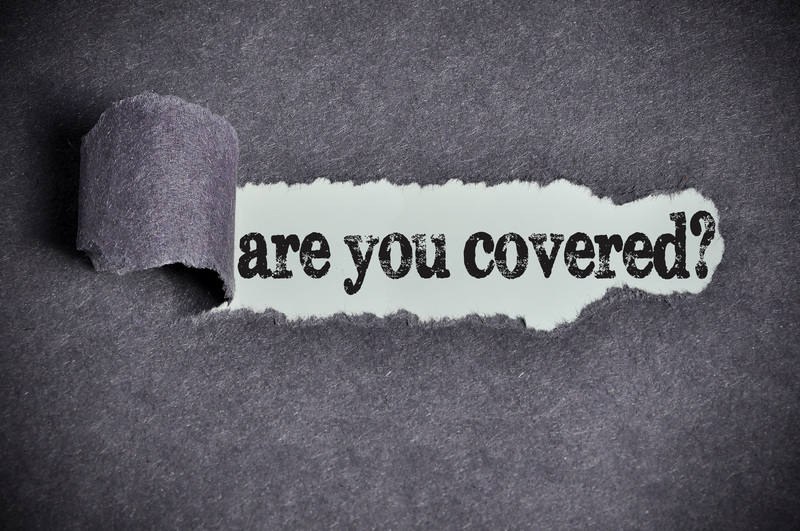Rethink DIY: The True Complexity of Moving a Piano
Posted on 14/06/2025
Rethink DIY: The True Complexity of Moving a Piano
Introduction: The Allure and Risks of DIY Piano Moving
Picture this: You're moving to a new home, and as you scan the room, your eyes land on your beloved piano. Maybe it's a grand, upright, or studio version--but there it is, hulking, heavy, and precious. If you're like many ambitious homeowners, your first thought might be, "I can move this myself." You might even be tempted by online articles or video tutorials making DIY piano relocation look easy and cost-effective.
But is it really that simple? Let's rethink the DIY approach to moving pianos. In this comprehensive article, we'll delve into the genuine complexity involved in moving a piano, uncover why it's vastly different from moving regular furniture, and analyse the hidden risks and costs that come with the DIY route.

Why Are Pianos So Hard to Move?
At first glance, a piano doesn't seem wildly different from other large items you might haul during a move. However, anyone who's tried to shift one quickly realizes that pianos are a unique challenge for several critical reasons. Understanding these complexities is key to avoiding disaster.
The Anatomy of a Piano: More Than Meets the Eye
- Weight: Even small upright pianos can weigh over 300 pounds, while grand pianos can tip the scales at more than 1,200 pounds.
- Size: Their awkward proportions--often tall, wide, and top-heavy--make them tricky to maneuver around tight corners or on stairs.
- Delicacy: Despite the robust exterior, a piano's internal mechanisms (over 10,000 moving parts in some models) are extraordinarily sensitive to shock, tilt, and vibration.
- Value: Whether it's a family heirloom or a professional-grade instrument, pianos are emotionally and financially significant.
Complexities Hidden Inside Every Piano
When considering DIY piano moving, it's critical to recognize the hidden complexity of the instrument's inner workings:
- Action Mechanism: Delicate moving parts such as hammers, dampers, and keys are easily knocked out of alignment.
- Strings and Harp: The cast iron harp alone can weigh hundreds of pounds, and the strings themselves are under immense tension (up to 20 tons in a grand piano).
- Wooden Body: The external casing is susceptible to chips, cracks, and scrapes, especially when lugged through narrow hallways and doorways.
It's this blend of weight, size, and fragility that makes moving a piano a uniquely complex task.
Common Misconceptions About Moving Pianos
"It's Just Heavy--A Few Friends Can Handle It"
Many people believe that with enough muscle, moving a piano is no tougher than relocating a couch. But the unwieldy shape and fragile internals make standard lifting techniques potentially disastrous. Pianos require careful planning and specialized equipment--muscle power alone isn't enough.
"Professional Piano Movers Are Too Expensive"
Many homeowners balk at hiring professional movers to save money. However, as we'll explore later, the true cost of DIY piano moves often ends up much higher in case of damage or injury. Hiring experts can provide peace of mind and prevent expenses that far exceed professional estimates.
The Real Dangers of DIY Piano Moving
Physical Harm and Injury
- Back, shoulder, and knee injuries: Even with multiple helpers, improper lifting and sudden mishaps frequently result in serious muscle or joint injuries.
- Crushed fingers or toes: Mistakes can happen in a split second, leaving you or your helpers with lasting injuries.
- Property damage: It's alarmingly easy to place a piano's weight on a weak floorboard, bang it against walls, or shatter delicate woodwork during maneuvers.
- Lost control on stairs: Navigating a staircase with a piano can end in catastrophe if the instrument tips, slips, or accelerates unexpectedly.
Instrument Damage
A quick bump or drop can inflict serious harm, including:
- Cracked soundboards or fractured frames--requiring expensive, sometimes irrecoverable, repairs.
- Misaligned action components--leading to sticking keys or poor sound no amount of tuning can fix.
- Warped or broken legs and pedals, scratched finishes, or chipped wood-- damage that's often permanent.
What Does Professional Piano Moving Involve?
Piano moving specialists bring more than strong backs--they bring training, technique, and specialized tools. The typical process includes:
- Assessment and Planning: Evaluating the piano's make and model, measuring doorways, staircases, and possible obstacles in advance.
- Disassembly: Removing legs, pedals, or the lyre from grand and baby grand pianos to reduce the risk of breakage.
- Proper Padding and Wrapping: Using heavy-duty padding, blankets, and shrink-wrap to protect the finish and edges.
- Specialized Equipment: Dollies, lift straps, skid boards, piano boards, and ramps--tools rarely found in a DIY mover's garage.
- Secure Transport: Using air-ride suspension trucks and strategic strapping to minimize vibration and shifting during transit.
- Insurance Coverage: Professional moving companies typically provide insurance--vital for invaluable or irreplaceable instruments.
The Hidden Costs of a DIY Piano Move
Trying to save money by moving a piano yourself? The costs can add up quickly:
- Equipment Rentals: You'll need to rent piano dollies, moving straps, padding, and possibly even a ramp or skid board.
- Transportation: Regular rental trucks often lack the necessary restraints and suspension, increasing risk.
- Repair Bills: Any accidental damage can lead to repair expenses that dwarf what you would have paid a professional mover.
- Tuning and Adjustment: Moving often knocks a piano out of tune--sometimes severely if the instrument was jarred or jostled, requiring a skilled technician to restore sound quality.
- Potential Medical Bills: Injuries from lifting or accidents can mean lost time and additional healthcare costs.
Factoring in these risks often reveals the "cost savings" are little more than an illusion.
Case Studies: When DIY Piano Moves Go Wrong
Still tempted to move your piano yourself? Here are a few all-too-familiar mishaps that illustrate the dangers of underestimating the complexity of piano relocation:
The Basement Grand Piano Disaster
After a home renovation, a couple attempted to move their baby grand piano from the basement to the main floor. Without the proper skid board or straps, the piano slipped on the stairs and crashed, breaking two legs and breaking through a landing wall. The repair costs--plus structural home repairs--far outweighed the initial savings.
Scratched and Smashed Upright
A group of friends tried to load an upright piano onto a rented moving truck. In the process, they misjudged the turn angle at the door, gouging the finish and chipping the corners. Once inside the truck, inadequate strapping resulted in the piano tipping during transport, bending the pedal mechanism irreparably.
Don't let your cherished instrument become another cautionary tale. The true complexity of moving a piano deserves respect--and expert hands.
Tips for Safe Piano Moving (If You Must DIY)
While the safest route is always using professional piano movers, sometimes logistics or budgetary constraints leave you with no other choice. If you must attempt a DIY piano move, follow these essential guidelines:
- Recruit enough strong, able-bodied helpers--never attempt to move a piano solo or even with just two people.
- Rent or purchase the right equipment: Heavy-duty piano dollies, furniture straps, blankets, and a piano board for grand pianos are a must.
- Measure everything: Double-check all doorways, hallways, and staircases. Don't forget to assess outdoor travel paths.
- Prepare the new destination by laying down protection for floors and clearing pathways ahead of time.
- Wrap and pad the piano meticulously to prevent cosmetic and structural damage.
- Move slowly and communicate continuously--always have a plan for each movement, especially on stairs or around corners.
- Never tilt a piano excessively, as this can disrupt internal mechanisms and warp the frame.
If you do manage a successful move, schedule a professional technician for post-move tuning and inspection.
Piano Moving: Why It's Worth Hiring Experts
Professional piano movers exist for a reason--their experience, equipment, and insurance coverage guarantee a safe transition for your prized instrument. The investment:
- Protects your instrument's integrity and resale value.
- Guards against personal injury and property damage.
- Ensures the move is swift, safe, and efficient.
- Provides peace of mind, allowing you to focus on other aspects of your move.
With over 34,000 serious injuries each year related to household moving attempts, the risk is simply not worth it--especially when it comes to moving a piano.

Frequently Asked Questions About Piano Moving
Can I move a piano short distances by myself?
Even short moves--room to room or floor to floor--carry risks of injury and instrument damage. Never attempt to lift a piano without adequate help and proper equipment.
Is moving a digital or keyboard piano easier?
Digital pianos are lighter and less fragile, but caution should still be exercised to avoid damaging the casing or delicate electronics.
How much does professional piano moving cost?
Rates vary depending on the type, size, move distance, and obstacles. Upright moves typically start at $150-$350, with grand piano moves costing $300-$800 or more. This is far less than typical repair or injury bills stemming from a botched DIY attempt.
What if I need to move a piano internationally?
International piano moving involves additional planning, climate controls, and custom crating to ensure safe overseas transit. Only specialized movers should be entrusted with this process.
Conclusion: The Wise Choice for Every Piano Owner
Whether you play daily or keep your piano as a stunning centerpiece, your instrument is unlike anything else you move. Forget the myths about easy DIY moves: the true complexity of moving a piano lies not only in its considerable weight, but in its intricate mechanisms, substantial value, and the enormous risks involved.
Don't let a single misstep turn your cherished piano into a costly disaster. For safety, peace of mind, and lasting enjoyment, trust your piano to the experts. Rethink DIY--when it comes to relocating a piano, the smart move is a professional move.



